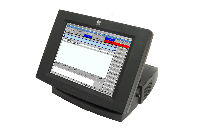How to Succeed in a Changed Retail World
After facing a flurry of store closings and significant economic impact, retailers have emerged in a vastly different world because of COVID-19. Across North America stores are reopening as various states and provinces find a “new normal.” The pandemic and its response were unlike anything we’ve ever seen before. So, what do retailers do now?
For a midsized retailer, it can be overwhelming to consider every aspect of reopening for business. Focus on several priorities to ensure the health, safety and efficiency of your store for both your customers and your employees.
1. Finetune Retail Operations
A survey by the Numerator intelligence found that 85% of Canadian consumers and 88% of U.S. consumers said the pandemic impacted their shopping habits. To minimize contact, shoppers make fewer trips to stores, but their purchases increase as they try to maximize their store visits. All retailers must now adjust their retail operations for this new reality.
The Numerator survey also found that 59% of Canadian consumers and 71% of U.S. consumers are concerned about stores selling out of products they may need. If you can’t meet the demand, your customers will visit another retailer or go online. Strive for precise inventory management. Know what you have in stock, where it’s located, what’s running low, and what’s out of stock, so you can replenish ASAP. As you prepare to reopen your retail store for in-store shopping, you need a thorough process to count, track and distribute your products.
2. Expand Omnichannel Fulfillment
Retailers were forced to get creative during the pandemic’s early stages, so many stores began new methods of order fulfillment, increasing their need for accurate inventory management. Online ordering and curbside pickup became a popular choice for pet stores, liquor stores and bookstores.
Curbside pickup isn’t going away in this changed new world. According to the Adobe Digital Economy Index, Buy Online Pick up in Store (BOPIS) increased by 208% in April 2020 compared to last year. Liquor-related purchases in particular, such as wine, beer and spirits saw a 74% increase in April. To meet this increased demand, eCommerce platforms like Drizly, City Hive, Wine Fetch and Bottle Capps have become even more vital in helping stores facilitate online orders, with ERP platforms like Magstar Total Retail playing a key role in ensuring the inventory is in place to meet consumer expectations.
If you offer curbside pickup, be sure to advertise it in and out of your store (e.g. using a window sticker saying “Curbside Pickup Available”) as well as on your website. You don’t want anyone to miss this since it can cost you a sale.
3. Improve Marketing and Merchandising
COVID-19 has also changed what we buy, especially as consumers continue to work from home and reduce their travel. For example, bikes had a 39% increase in sales in March 2020 as consumers found new methods of recreation.
Retailers must pivot and reconsider their product offerings, focusing on how to raise profits and meet consumer demand. One example of a pivot is in fashion. The need for face coverings have created a new category for retailers as masks become a fashion accessory, Old Navy, Disney, and Banana Republic are among those retailers capitalizing on the trend. Apparel retailers are also emphasizing comfy loungewear and shoes for stay-at-home days.
Consider what your customers need, what they don’t need, and how to market to them. Observe what’s selling, what’s not selling and adjust accordingly, offering discounts on the lower-moving merchandise. As you revamp your offerings, adjust merchandising methods as well. Consumers are naturally drawn to touch items, but this poses higher infection risks. Opening fitting rooms by appointment only, reducing the items on display, and removing tester or demo products are good ways to minimize contact.
4. Emphasize Customer Health and Safety
Customers want to know that visiting your store is safe, easy and convenient. You should know and abide by all relevant area and government ordinances for reopening during the pandemic. Be sure you implement store policies for cleaning and sanitation, such as:
- Reducing total occupancy, and closing some or all fitting rooms
- Designating one-way aisles with a marker
- Suspending services with high person-to-person contact such as fittings, alterations and makeovers
- Offering special shopping hours for the vulnerable population
- Limiting the number of people per household allowed in the store
- Requiring face masks and/or providing masks for in-store use
- Encouraging hand sanitizer use at the entrance and exit
- Installing plexiglass dividers and floor decals for social distancing
- Closing self-serve areas
- Sanitizing carts or offering complimentary cart sanitation wipes
Some retailers have additional health and safety measures, such as temperature checking and verbal health checklists for customers, in some cases even requiring customers to wear PPE like masks and gloves. Whatever safety checks you put in place, post signs outlining your new store procedures.
5. Employee Health
Employees are interacting with customers daily, and protecting their health is vital. Begin checking regularly to see if they’re fit to come to work. You should take their temperature with a touchless thermometer before each shift and ask a few basic health-screening questions about symptoms.
Some companies are using free health screening apps like WeProtectWell to make it easier for employees to submit a pre-work health questionnaire. You can set up a screening area to streamline the process of taking employee temps each shift.
You can also protect your employees during interactions with customers at the register by using plastic shields or plexiglass barriers to reduce contact during checkout and clean the area regularly. Your employees should also wear masks from home or provided to them.
Remember the mental health of your employees as well, as they are under immense stress and have been so for months. Working with the public can be draining both mentally and physically, so check in with them about how they’re feeling. Encourage them to do stress-relieving activities such as watching TV, exercising and talking to a friend.
6. Finances
Weathering the economic impact of COVID-19 hasn’t been easy, as the coronavirus caused a plunge of 16.4% sales in the U.S. in April, with dropping sales across the board. It goes without saying that you must be cautious about every penny. It’s time to evaluate your expenses, breaking them into categories like Labour, Occupancy, Debts, etc. Will you need to seek government assistance on your rent? Defer payments to your suppliers? Cut down your inventory? Seek a new line of credit?
As you evaluate what to trim or cut, ask yourself the following:
- Can you reduce the expense based on current business needs?
- Is there government assistance available for rent or other costs?
- Are you able to rationalize these expenditures, especially during a pandemic?
Conclusion: Surviving the Tough Times
Your retail business has been through one of the most stressful times in recent history. Keeping these priorities in mind will help you weather the storm. If you’d like to discuss how you can reinvent your retail chain to match the “new normal,” Magstar President Steven Greenwood is happy to connect with you and provide some tips.
Book a Chat with Him Right Now!
RECENT POSTS
 3 Questions You Should Ask When Selecting POS Hardware for Your SMBWhen selecting point of sale hardware, retailers have to [...]
3 Questions You Should Ask When Selecting POS Hardware for Your SMBWhen selecting point of sale hardware, retailers have to [...] 3 Operational Challenges Only Apparel Retailers will UnderstandIf these pain points sound like familiar complaints from [...]
3 Operational Challenges Only Apparel Retailers will UnderstandIf these pain points sound like familiar complaints from [...] How to Ensure Your Customers Never Abandon a Queue Line AgainAfter facing a flurry of store closings and significant [...]
How to Ensure Your Customers Never Abandon a Queue Line AgainAfter facing a flurry of store closings and significant [...]